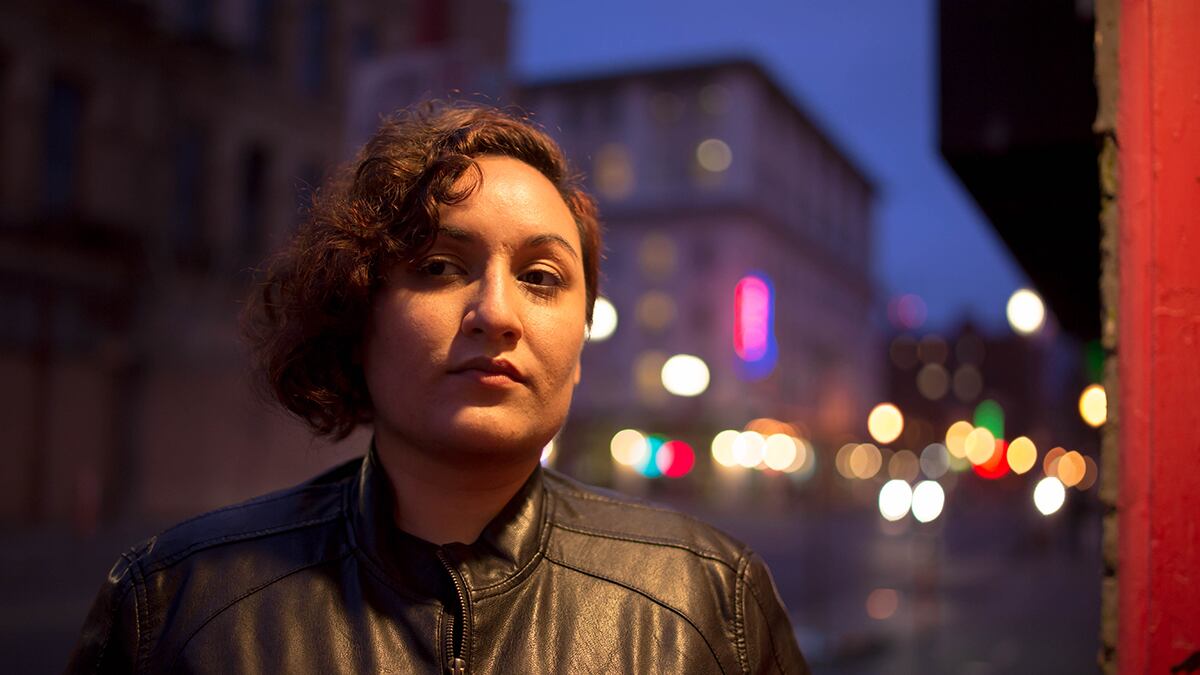Sloane Leong's A Map to the Sun is built on a simple narrative: Five young women join a scrappy, underfunded high school basketball team to avoid getting expelled. But the personality the Portland cartoonist breathes into each of her graphic novel's characters—who are primarily women of color, with complex families and responsibilities—brings the familiar story an extraordinarily lived-in weight.
It might seem unlikely that a brightly drawn book about youth basketball could also speak powerfully to the vestiges of colonialism that linger and hold court over so many marginalized lives. But Leong's perspective as a person of Hawaiian, Chinese, Italian, Mexican, Indigenous and European ancestries makes her an ideal voice to tell those stories. When A Map to the Sun isn't busy being fun and action-packed, it carefully portrays intergenerational relationships—both loving and damaging—with a deft touch that puts it in a class of its own.

For years, Leong self-published her comics and worked as a professional penciller and artist. In 2018, the first collection of her sci-fi comic series Prism Stalker appeared on year-end lists by the AV Club, Paste magazine, and the New York Public Library, catapulting her to national comics notoriety and causing the publisher Image to rush order more copies to keep up with demand. It's hard to expect anything less from A Map to the Sun.
WW: How did this story come to you? Is it based on personal experience?
Sloane Leong: It's very personal. I made a short comic in 2016, which is the first 30 pages of Maps. It focuses on Ren and Luna, who meet over the summer and have this whirlwind friendship-romance that quickly falls apart. That was inspired by a dynamic I experienced with a friend when I was young. I loved them so much, and then one day they just literally disappeared and I had no way to contact them.
Growing up, I didn't see my experiences reflected a lot in coming-of-age fiction, especially in movies. I felt alienated by how popular culture portrayed young people's childhoods. So I wanted to do my own take on that.
Reading A Map to the Sun feels like running through it—the colors pull you through with their intensity. Where does your approach to color come from?
A lot of my inspiration for color comes from Hawaii. The colors you see there are just phantasmagoric. You have sunsets with a million colors. You have these orchids that contain entire color palettes in one petal alone. Then from my mom's side, I had exposure to traditional Mexican art, which is also extremely vivid [and] clashy. I wanted to fuse that into Maps. I drew the comic on paper with ink—using brush and nib pens—then I colored it digitally. And I found that color changed the scene and made some interesting, surprising twists in the atmosphere.
Mainstream comics have very literal color: green trees, green grass, blue sky—just very literal. I also work in sci-fi, and that whole genre is very scared of color. When you think of a spaceship, you think of silver—clean, sterile. And, to me, that's a very colonized view of the future. It's a very colonized view of color.
The vivid color reminded me of the intensity of emotions at that age, too.
Yeah, everything is at 110%.
Where is the setting of this story? It feels like Southern California.
I grew up all over Southern California, so it's a vague amalgamation of Oceanside, L.A. and Carlsbad.
Did you move to Portland to go to art school?
I'm self-taught.
This level of skill made me think you attended a fine arts school.
The extent of my schooling is that I got a GED when I was 16.
What led to that?
I got my GED while I was living in Hawaii. The schools there were exceptionally terrible. There were good teachers but no funding. If I could finish the math problem of the week, I would have nothing to do, and I just spent the rest of my time drawing. I thought it was a waste of time, so I took my GED and just started working.
A Map to the Sun reminds me of Mariko Tamaki and Jillian Tamaki's 2014 graphic novel, This One Summer, mostly for the way both works dig deep on real human imperfections. Was that an influence?
This One Summer wasn't really an influence because, by the time I read it, I'd already mostly drawn Maps. Lynda Barry's autobio stuff was pretty inspiring to me. She also gets to the kind of grim but potently real aspects of childhood, teenhood, and developing relationships.
A lot of my references are manga. Real by Takehiko Inoue was a big influence. That's about wheelchair basketball. It's like a 20-volume master work. The wheelchair basketball scenes are amazing. I also love Mitsuru Adachi's sports-themed manga. His humor and the way he paces out sports games are really great. Those are the ones that were present with me while I was working on Maps.
It sounds like you've been actively studying motion and portraying sports in comics.
Personal experience, too. I was on a co-ed basketball team in middle school. There weren't enough kids to make boys or girls teams individually, but I've never been especially athletic. I have asthma and I'm a book nerd, but I had a lot of fun playing, and a lot of team dynamics in Maps are drawn from that weird, little, thrown-together team.
STREAM: Sloane Leong appears at A Map to the Sun's virtual book release on Floating World Comics' Twitch stream at twitch.tv/floatingworldcomics. 6 pm Wednesday, Aug. 5.
